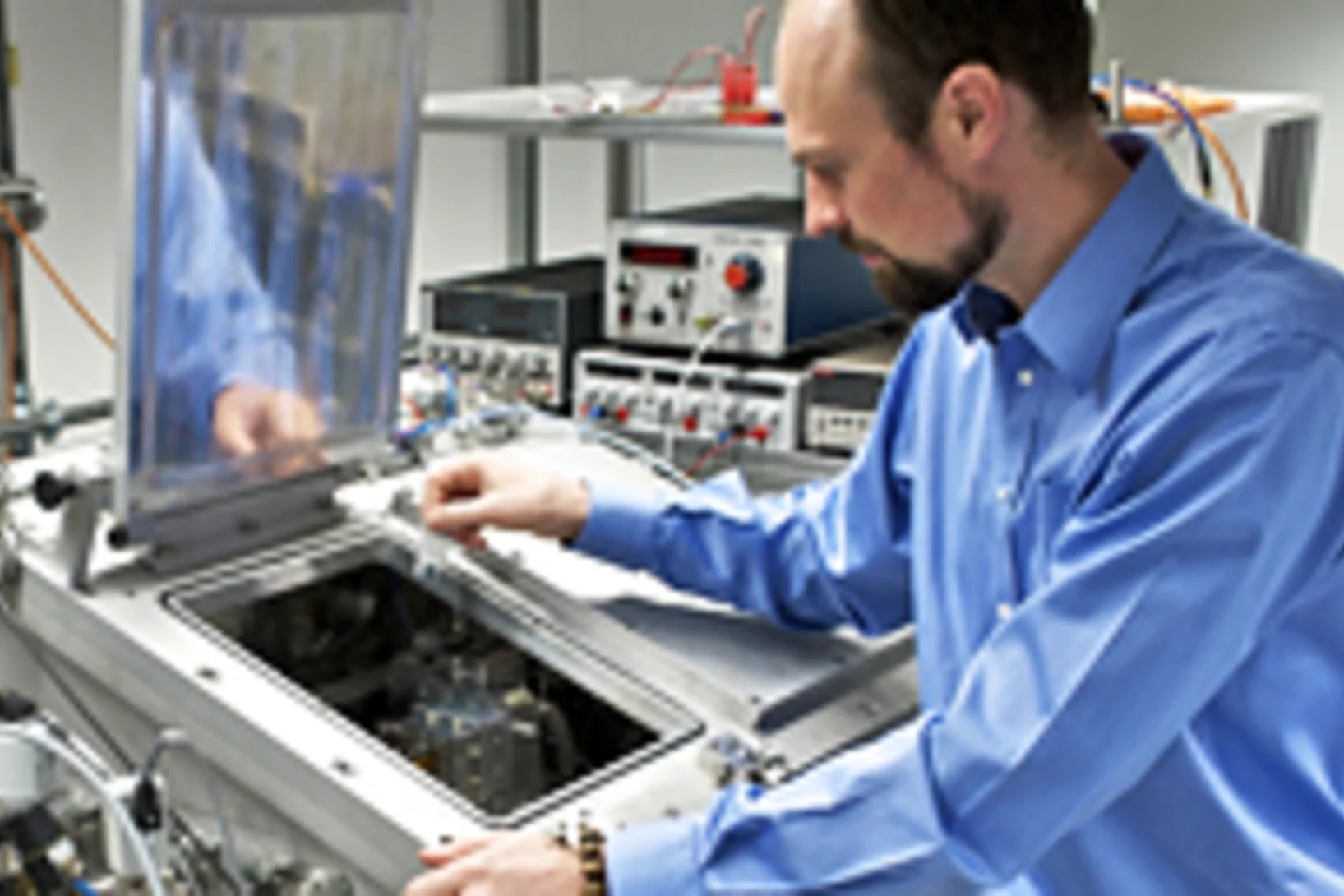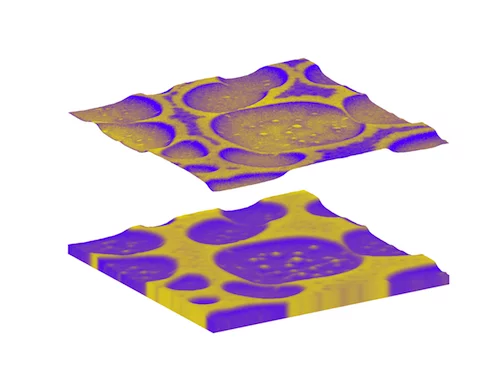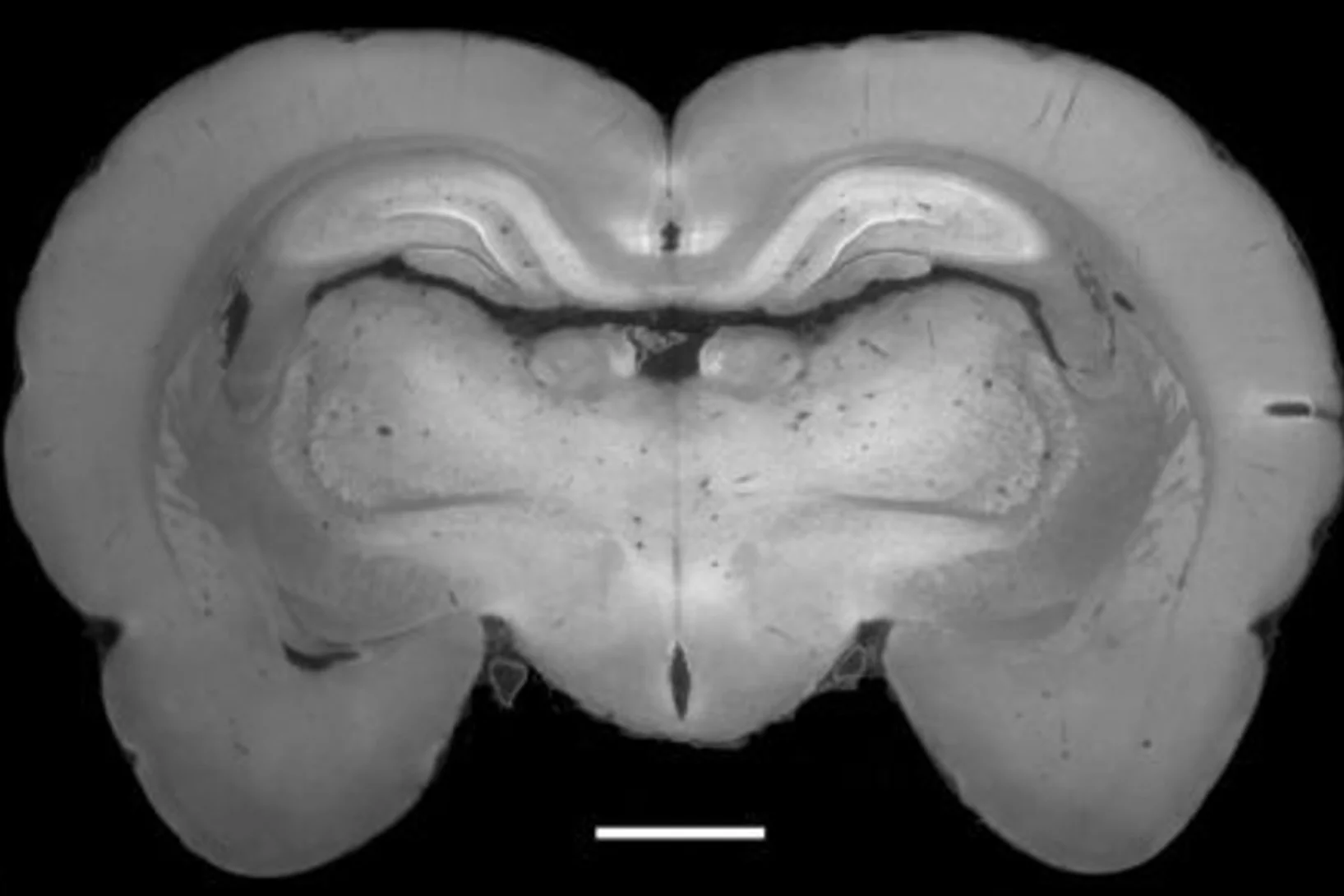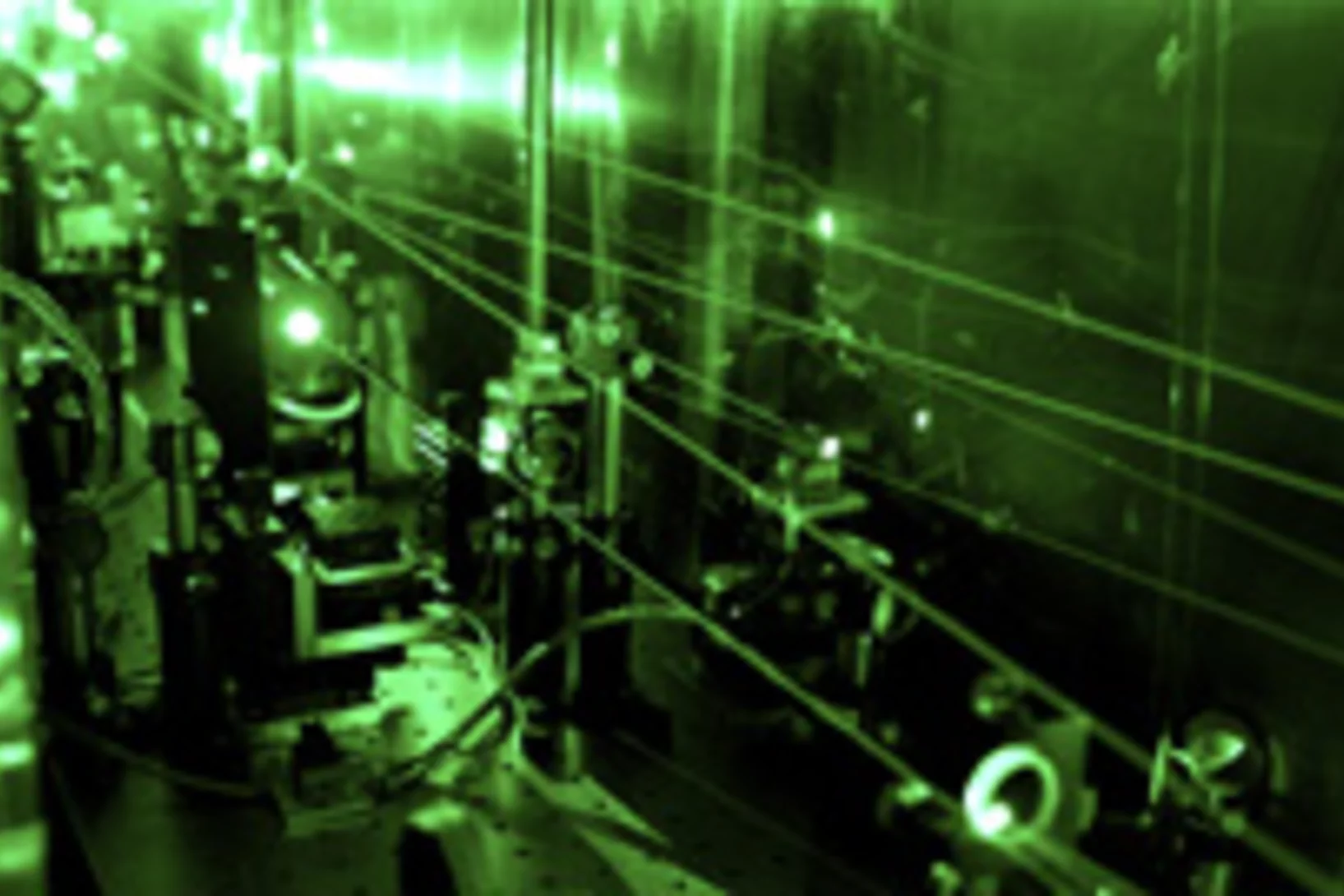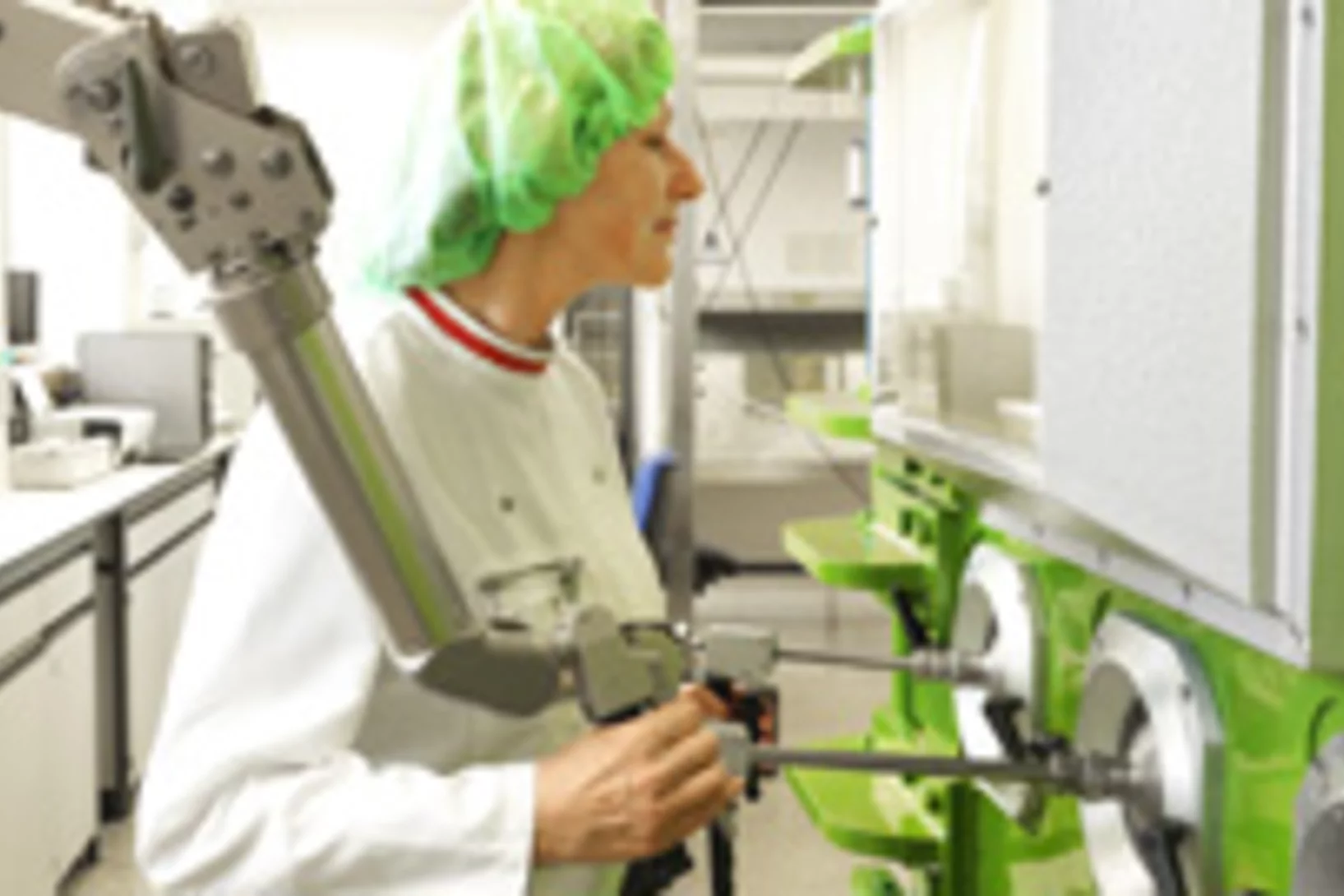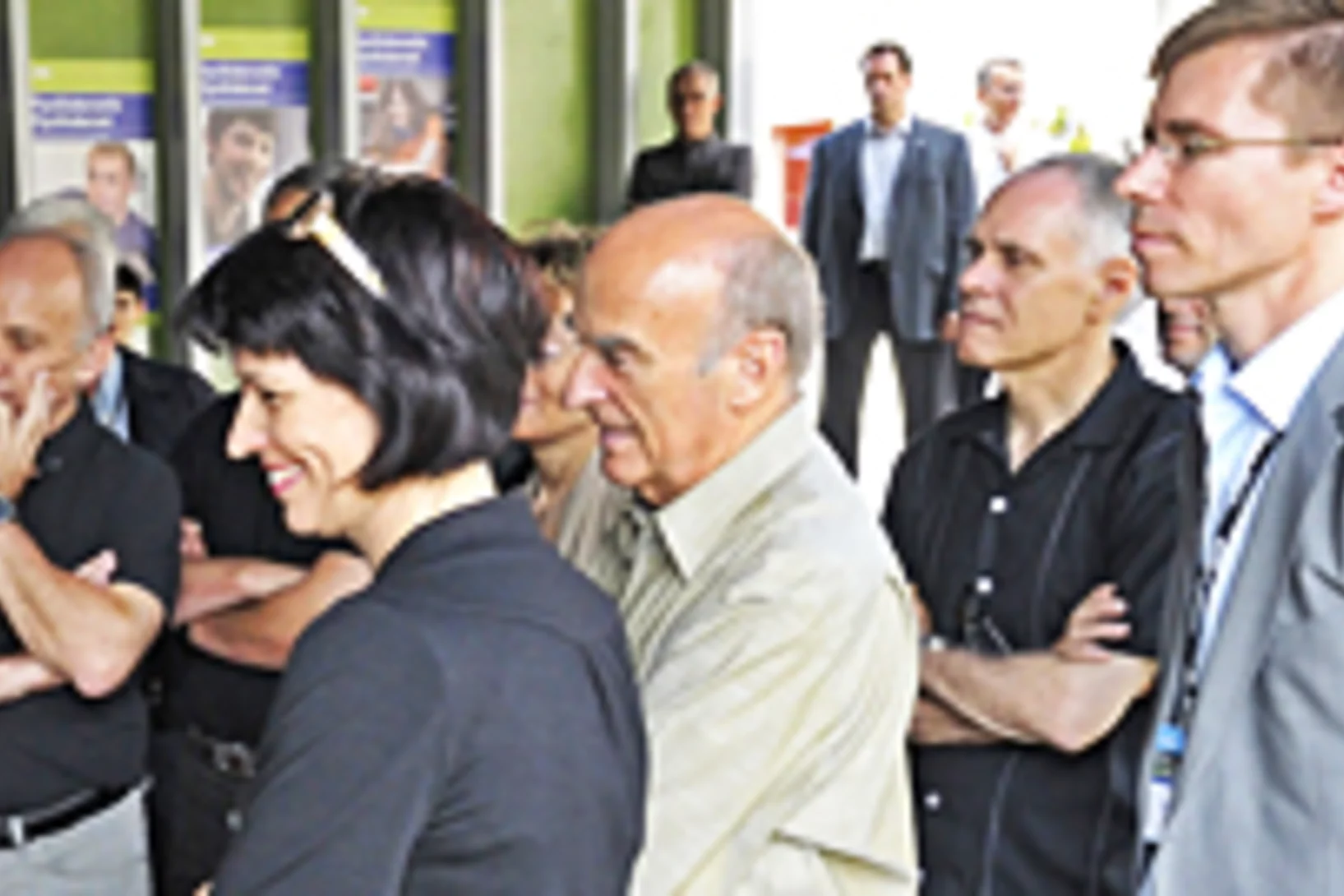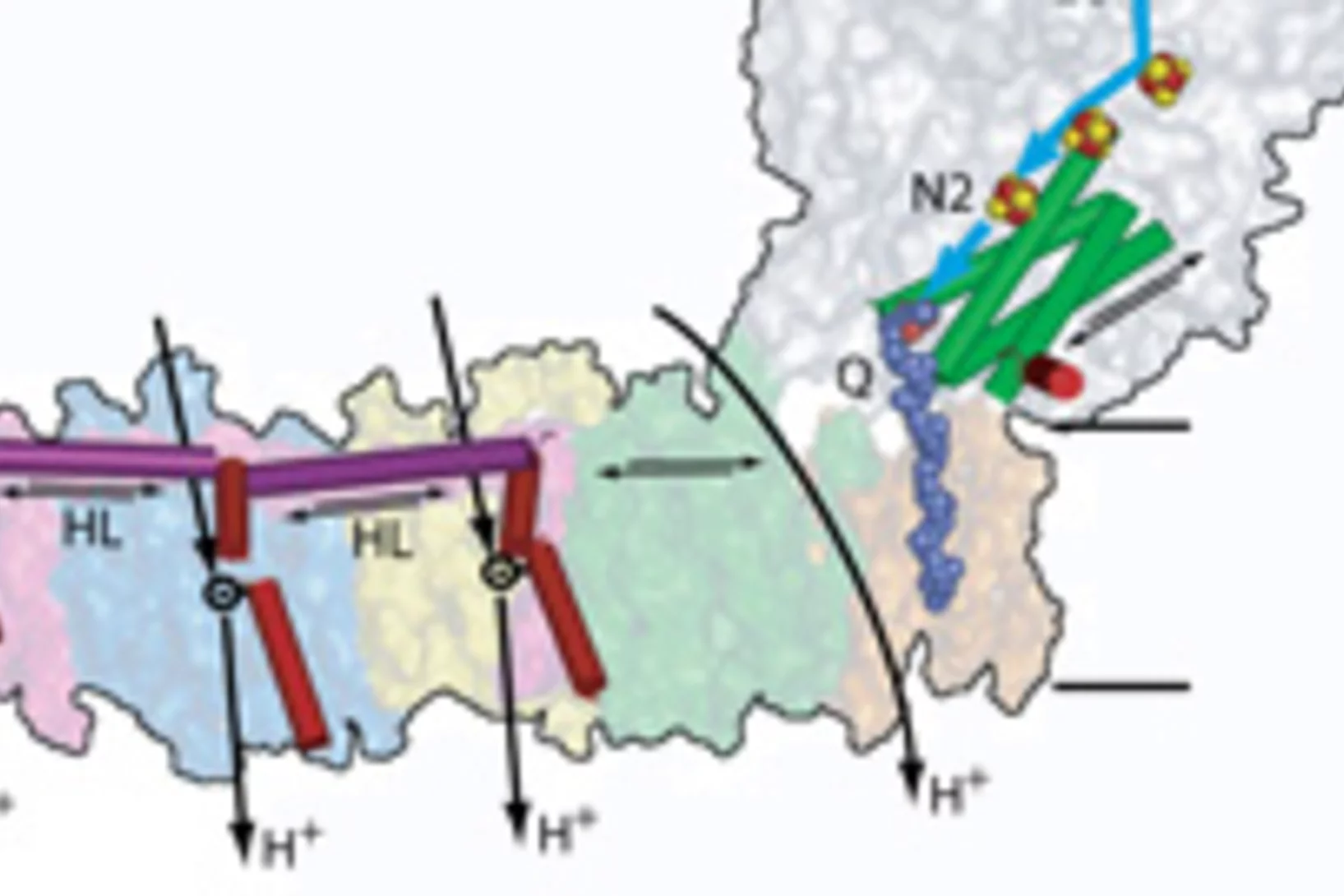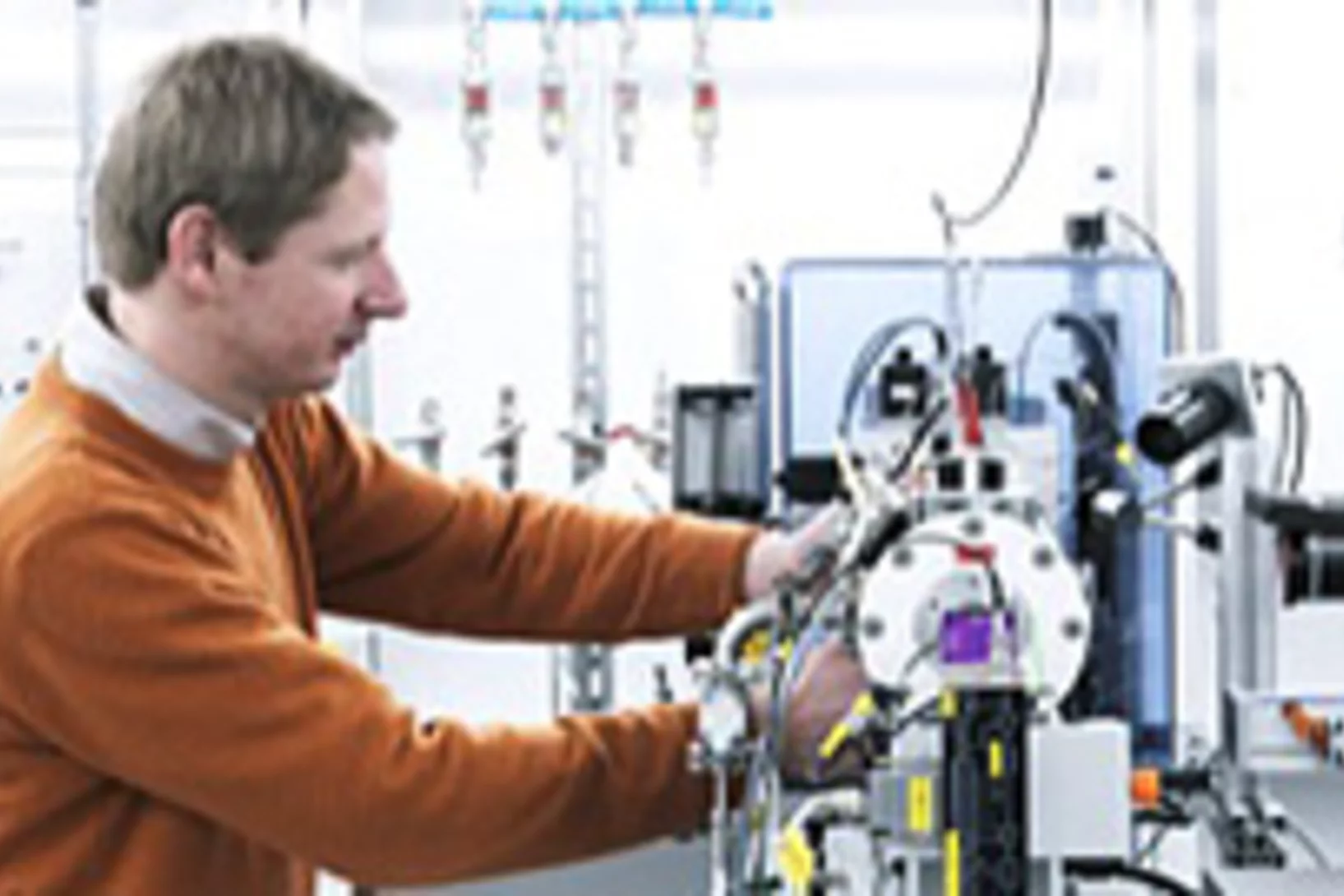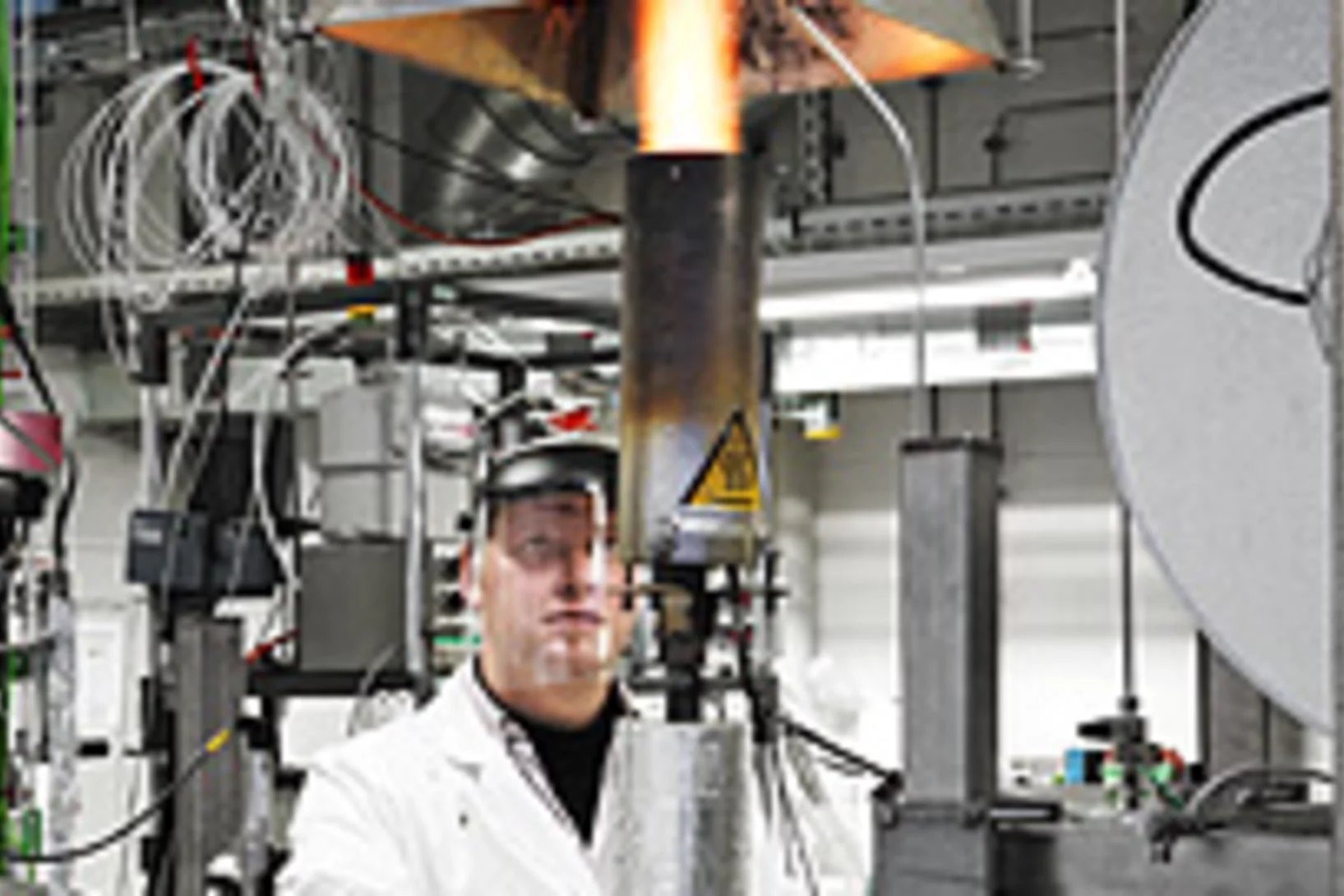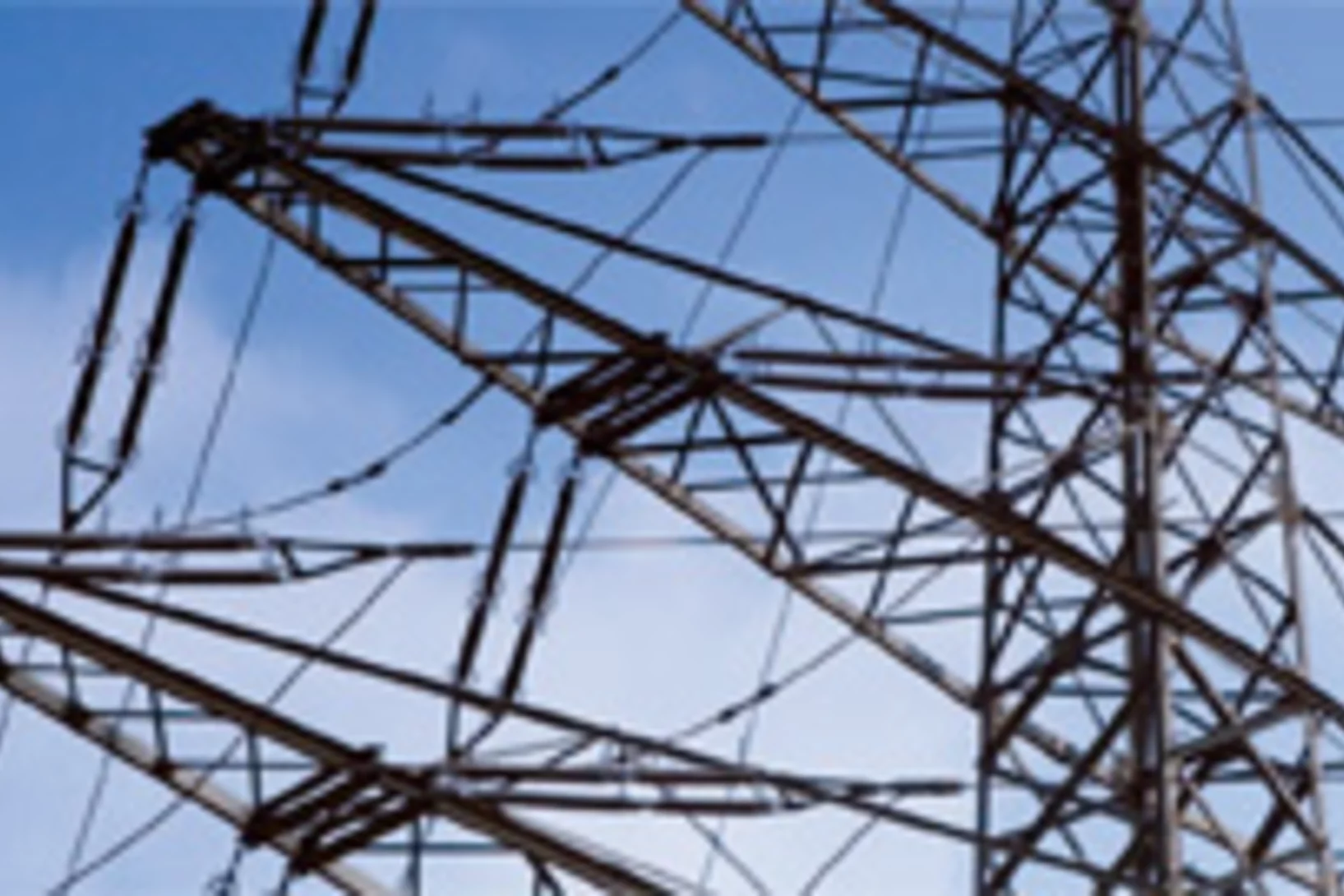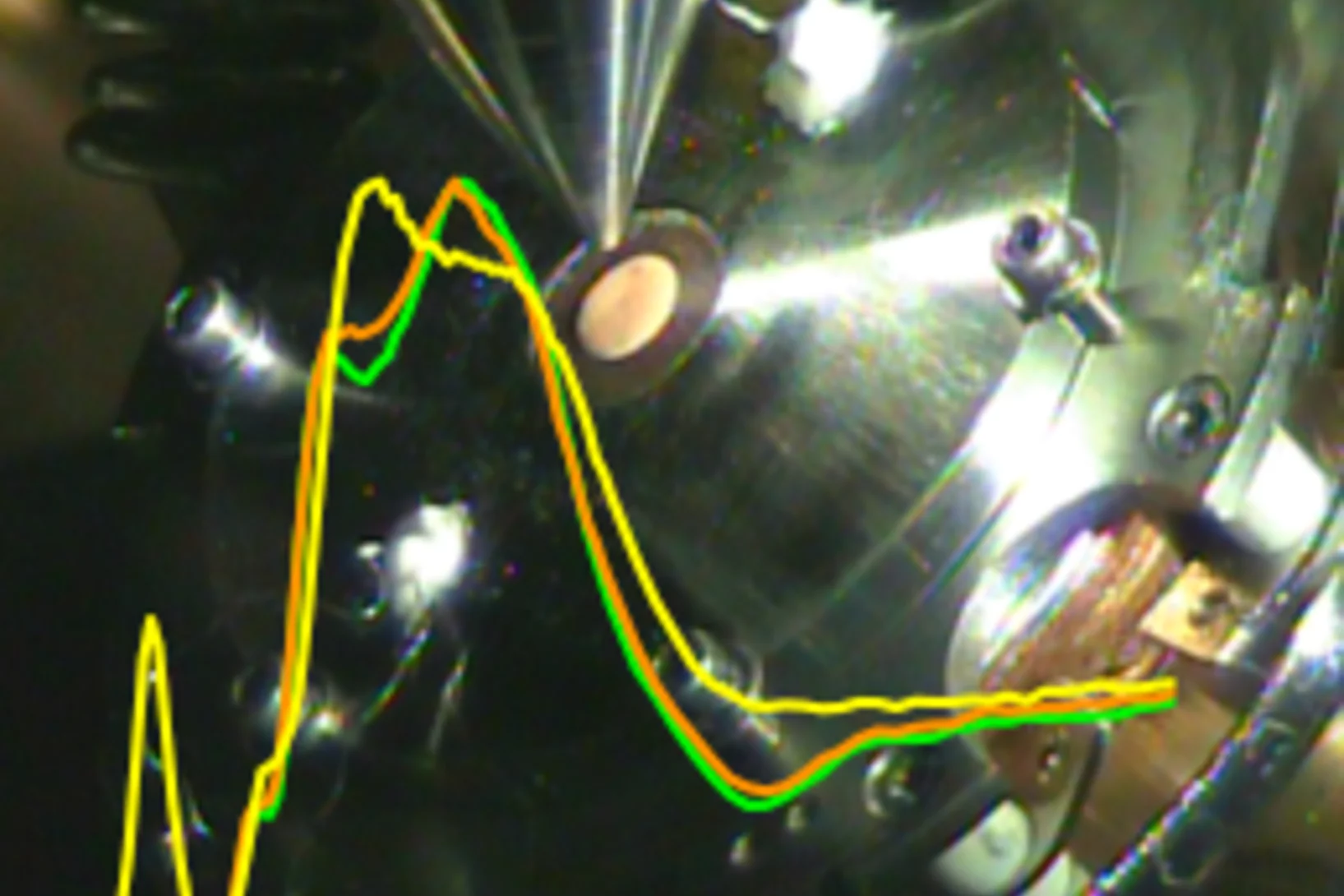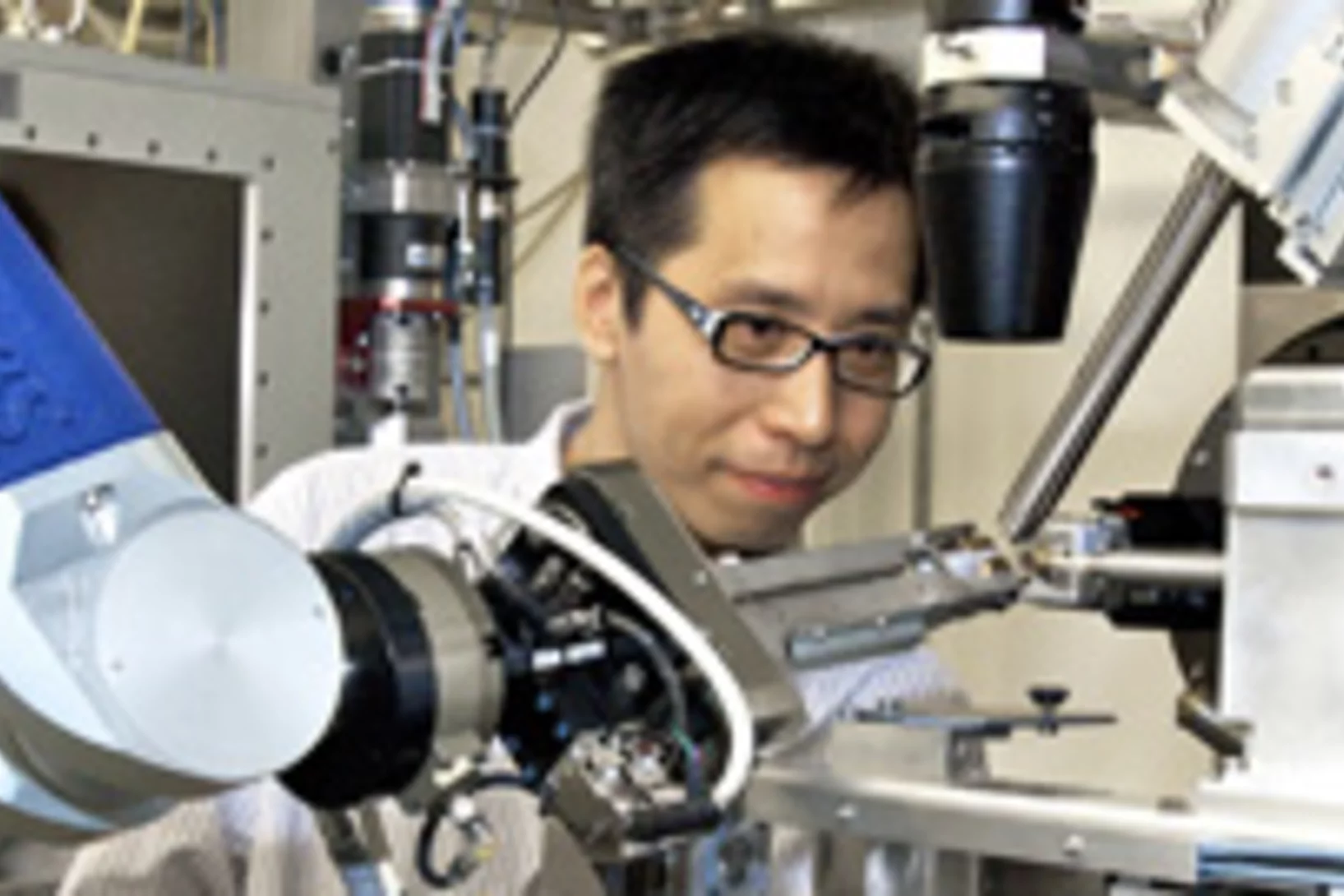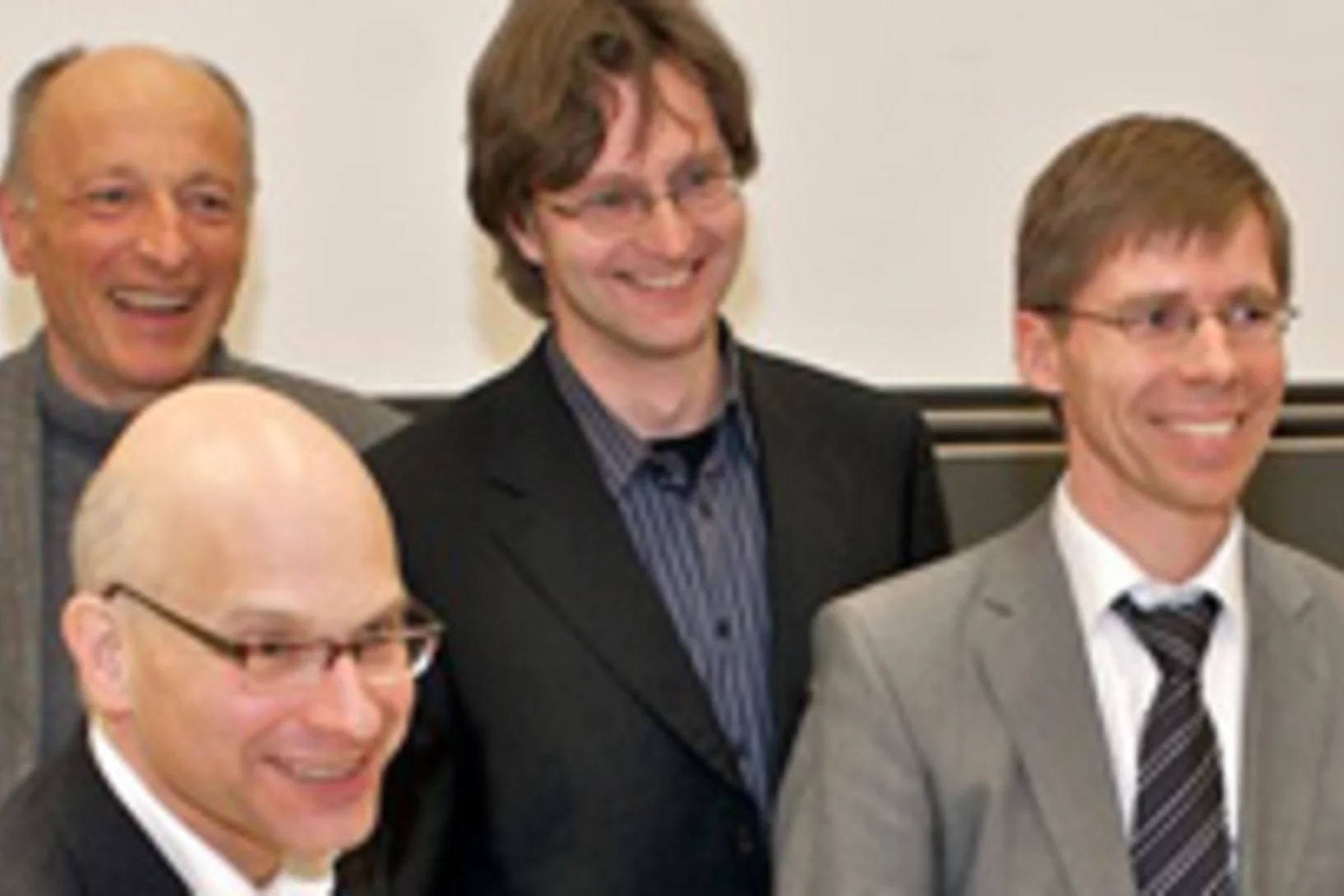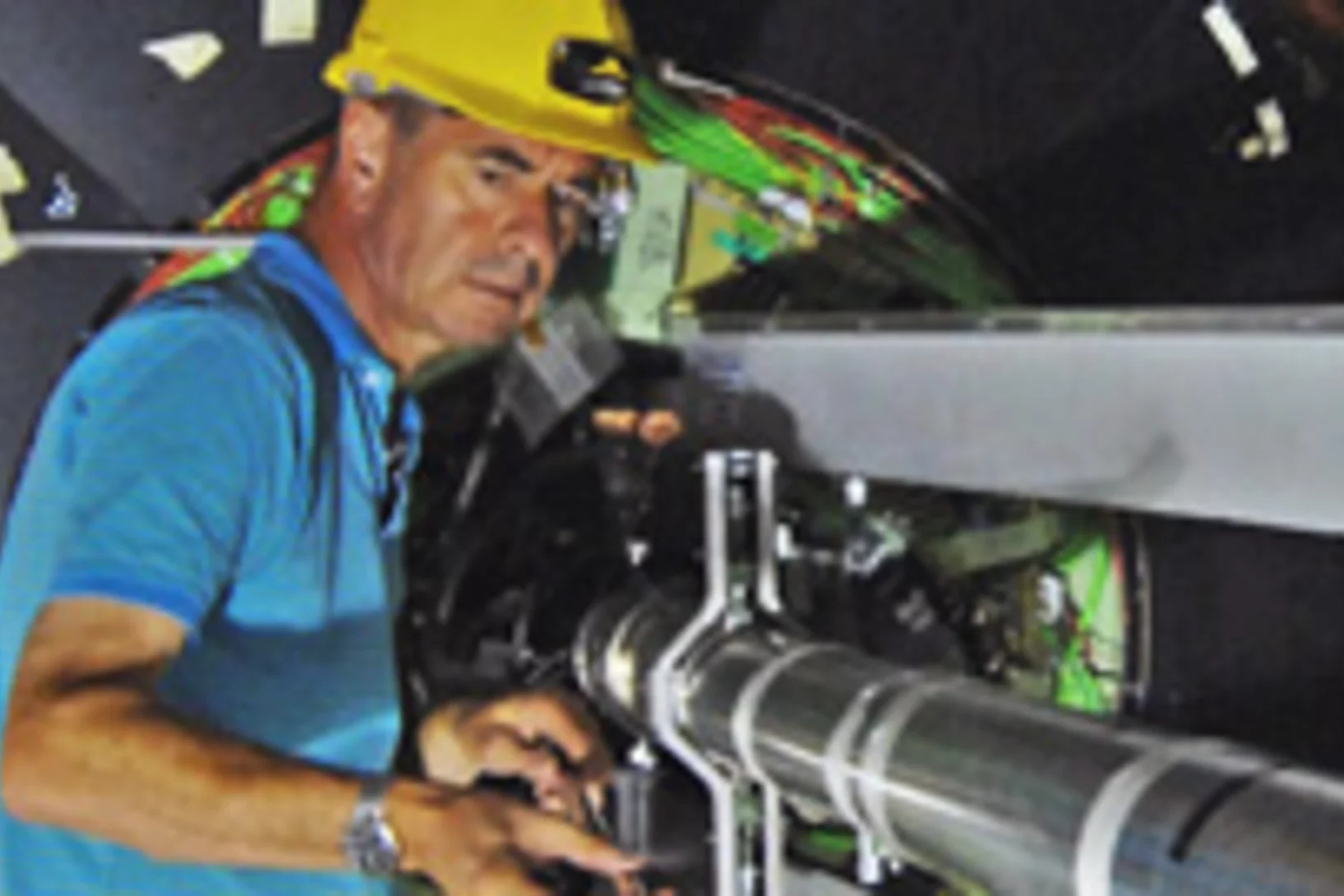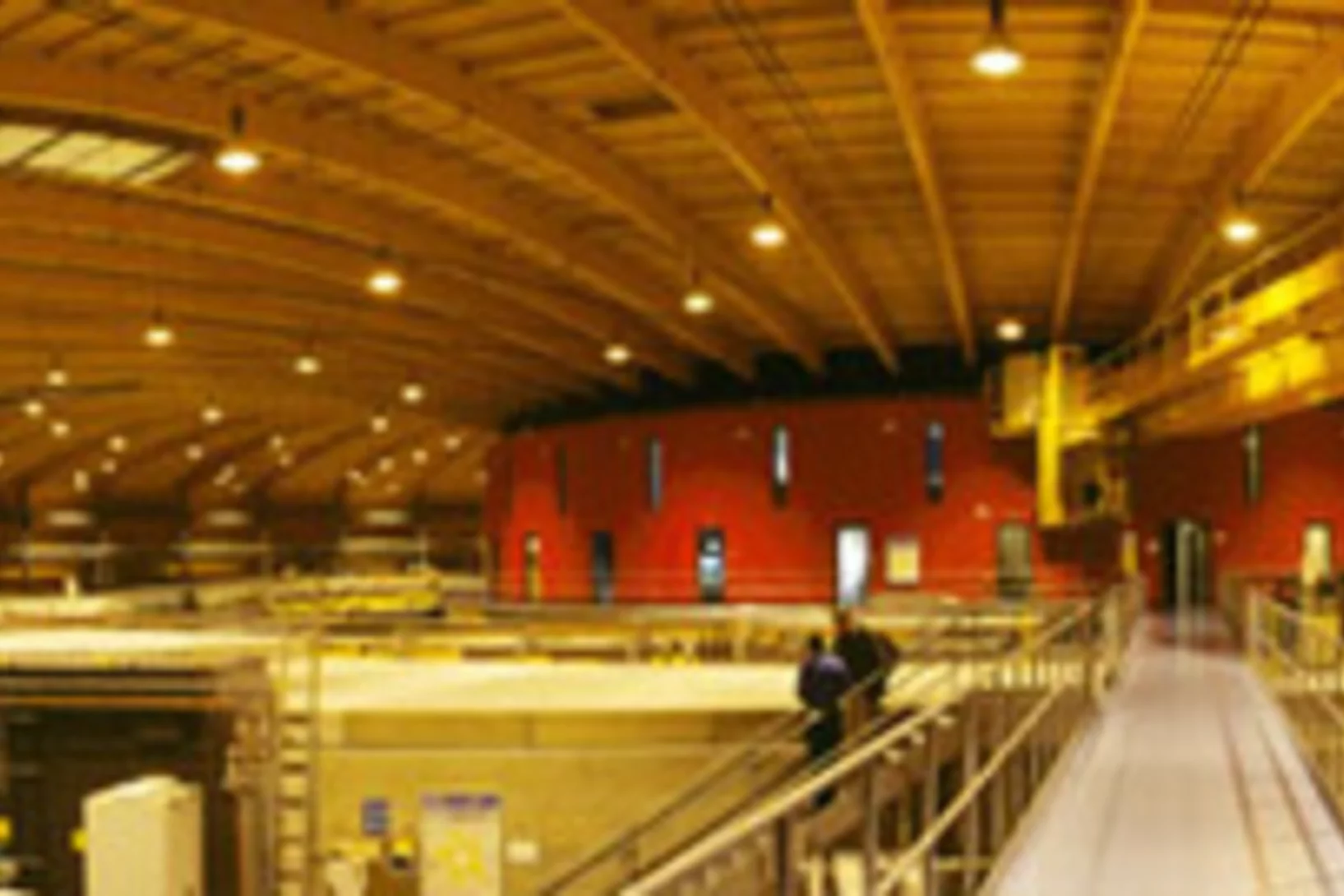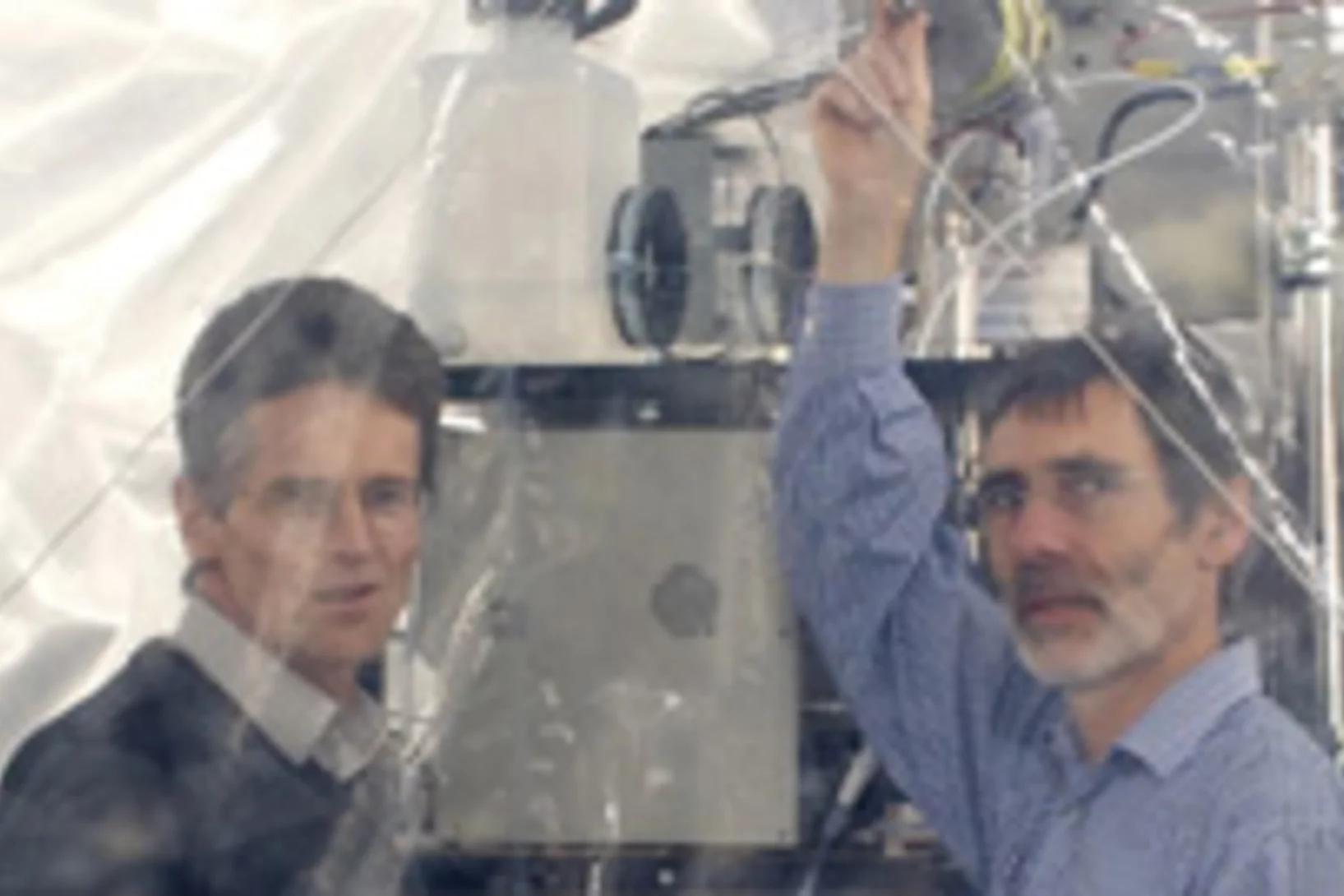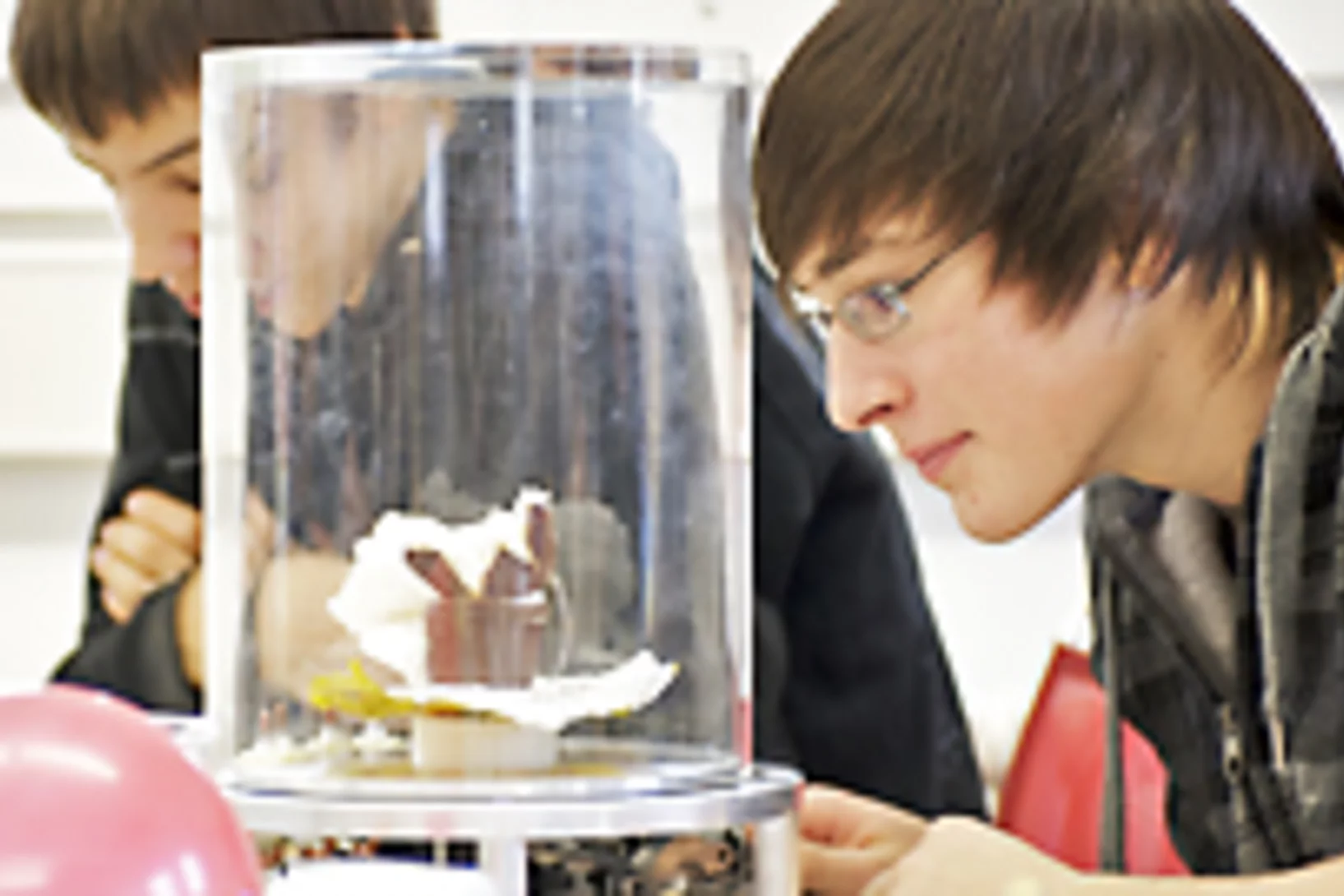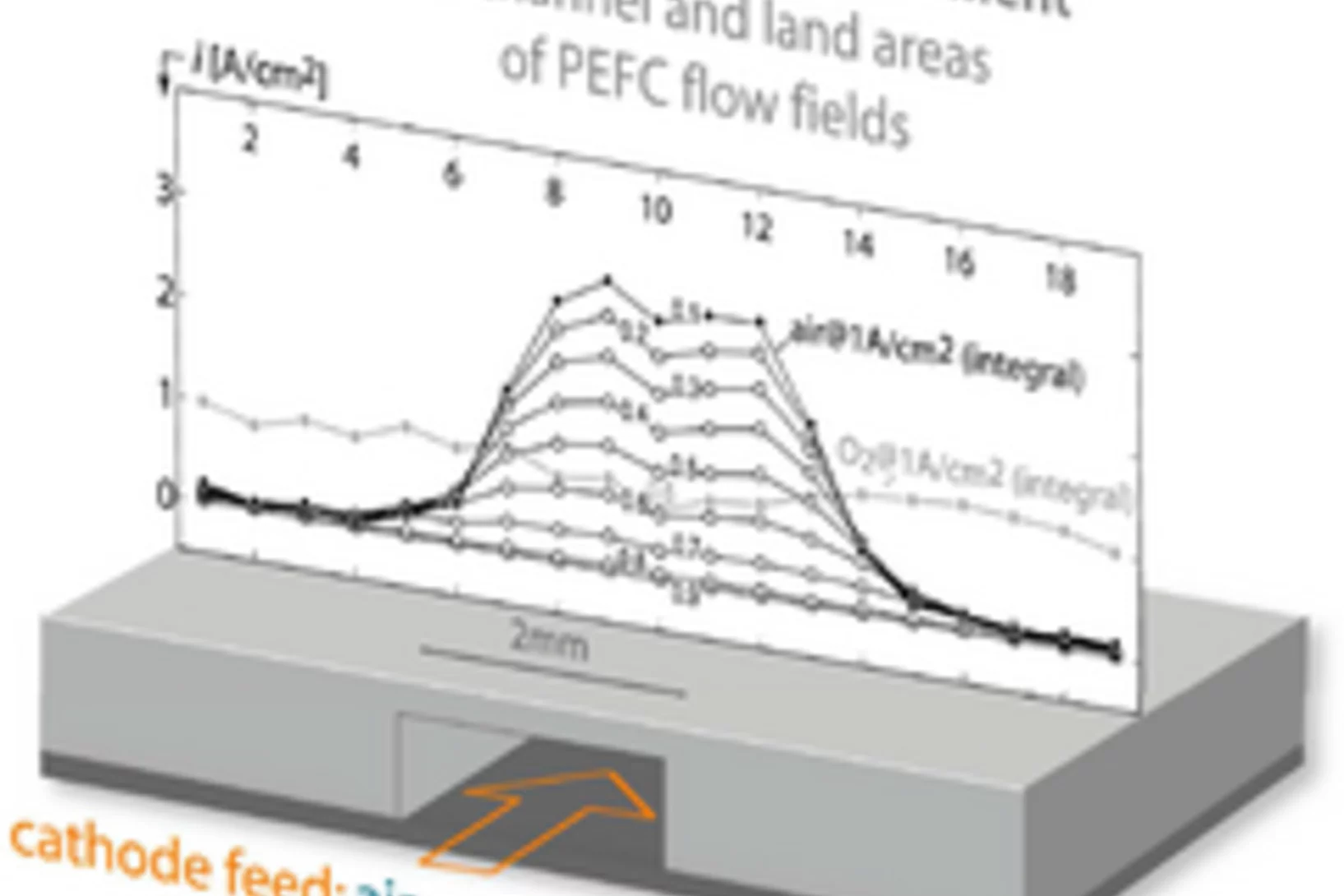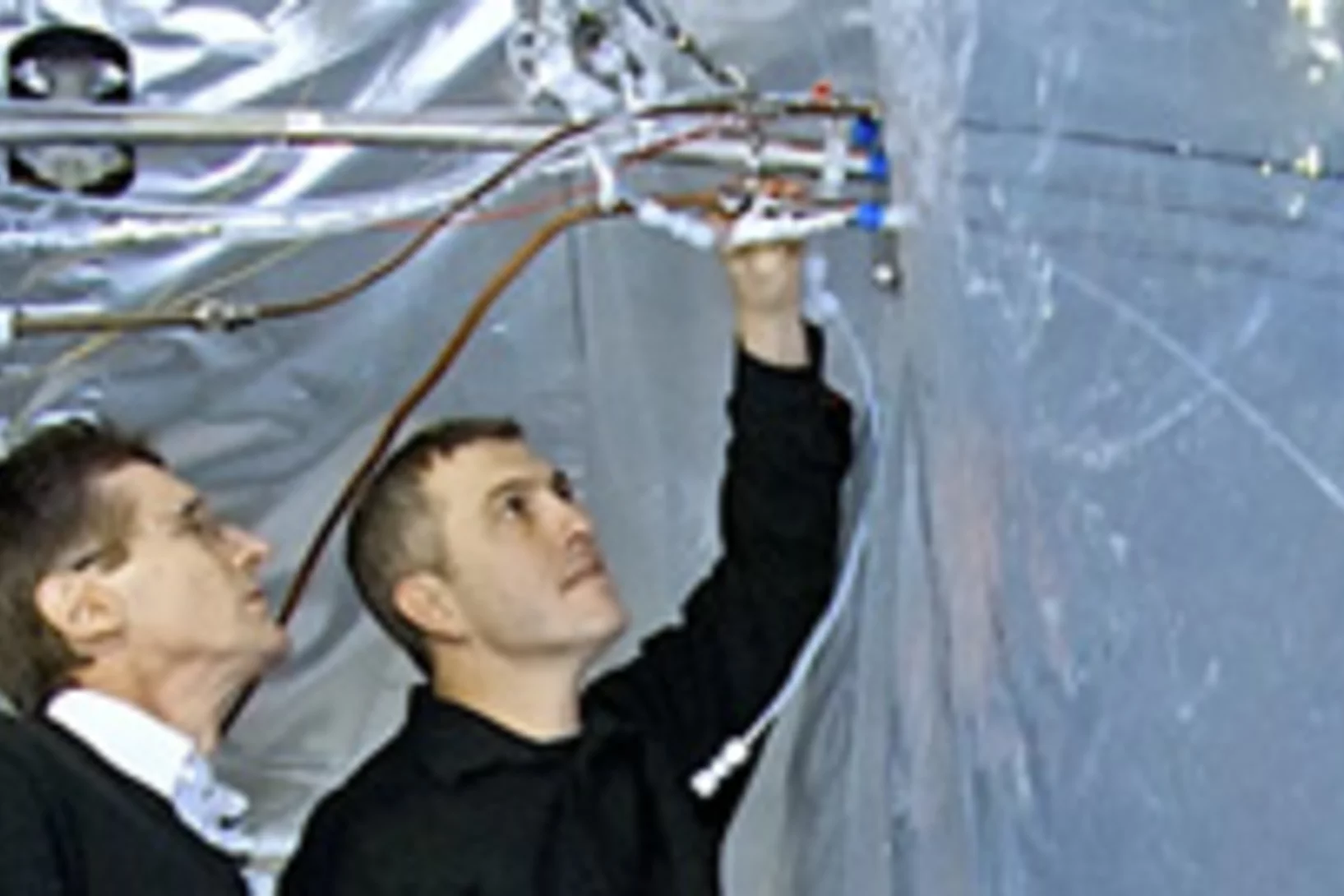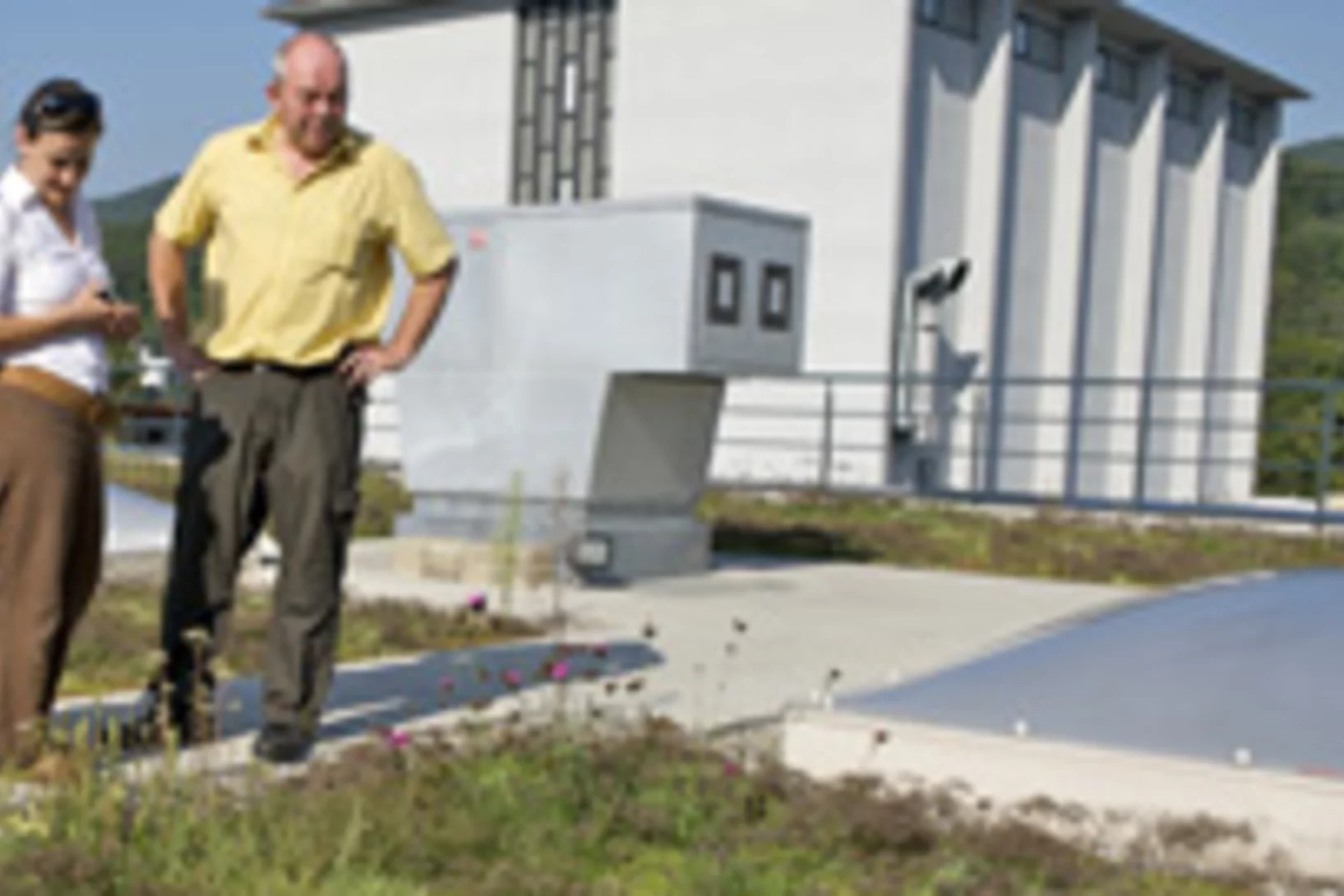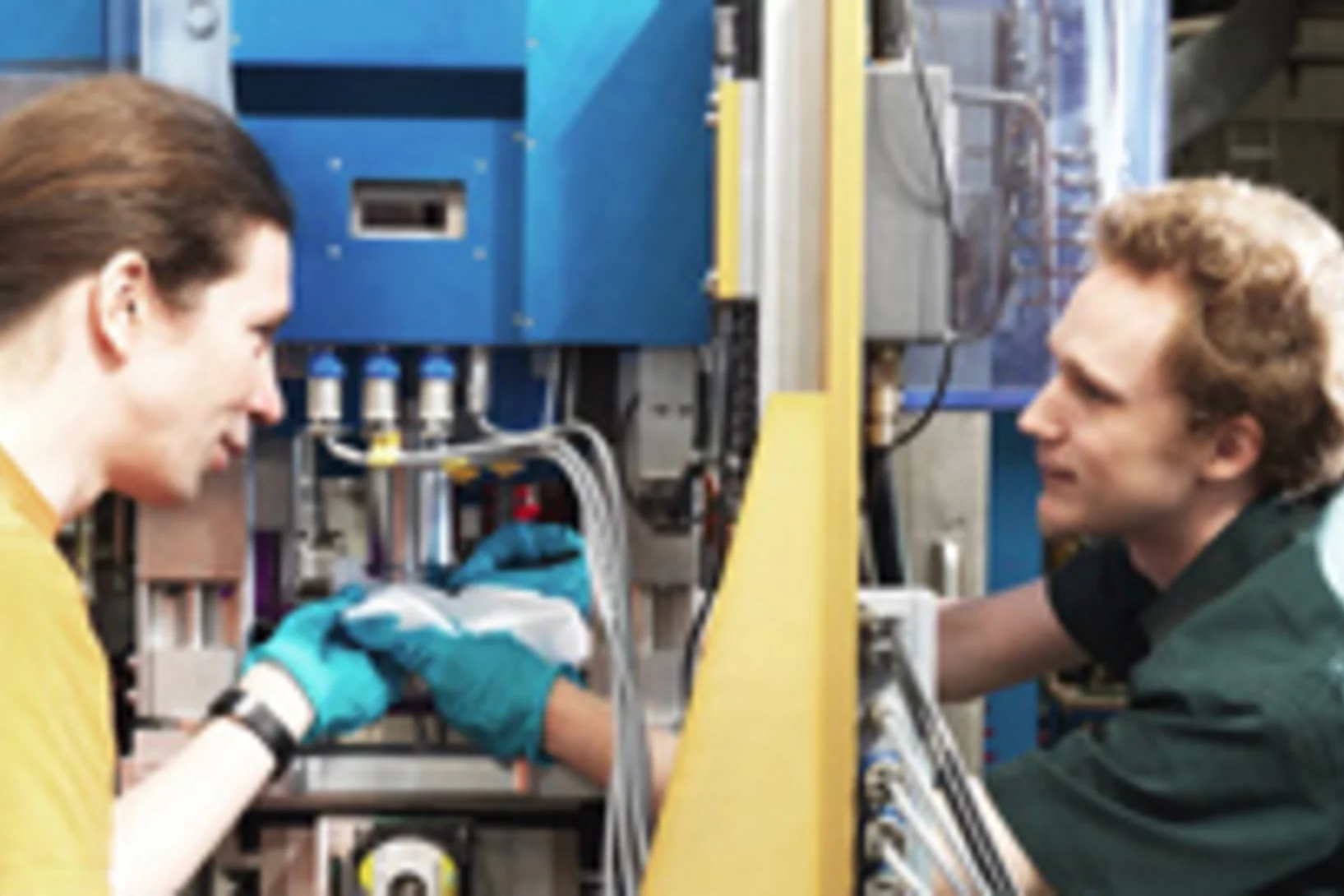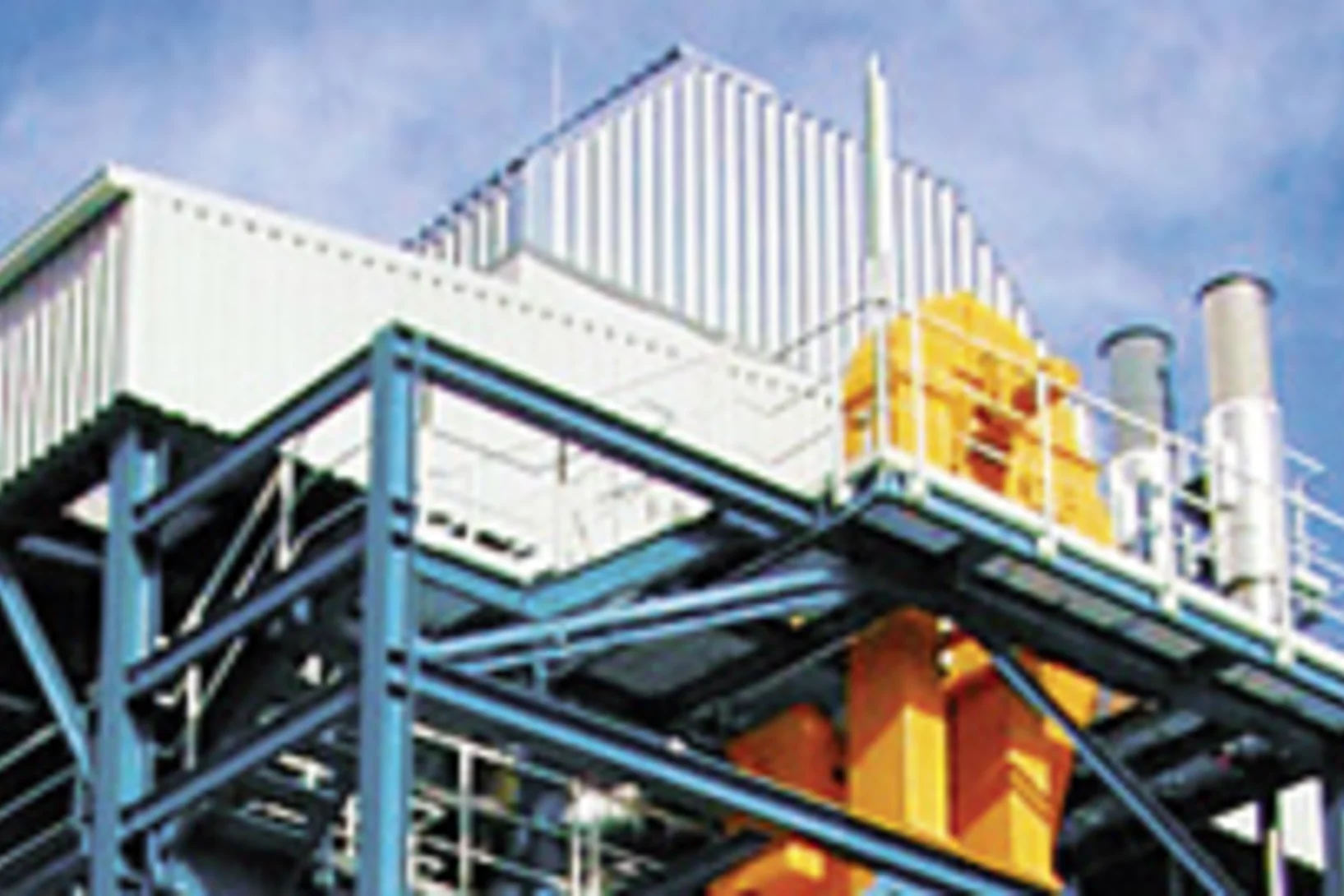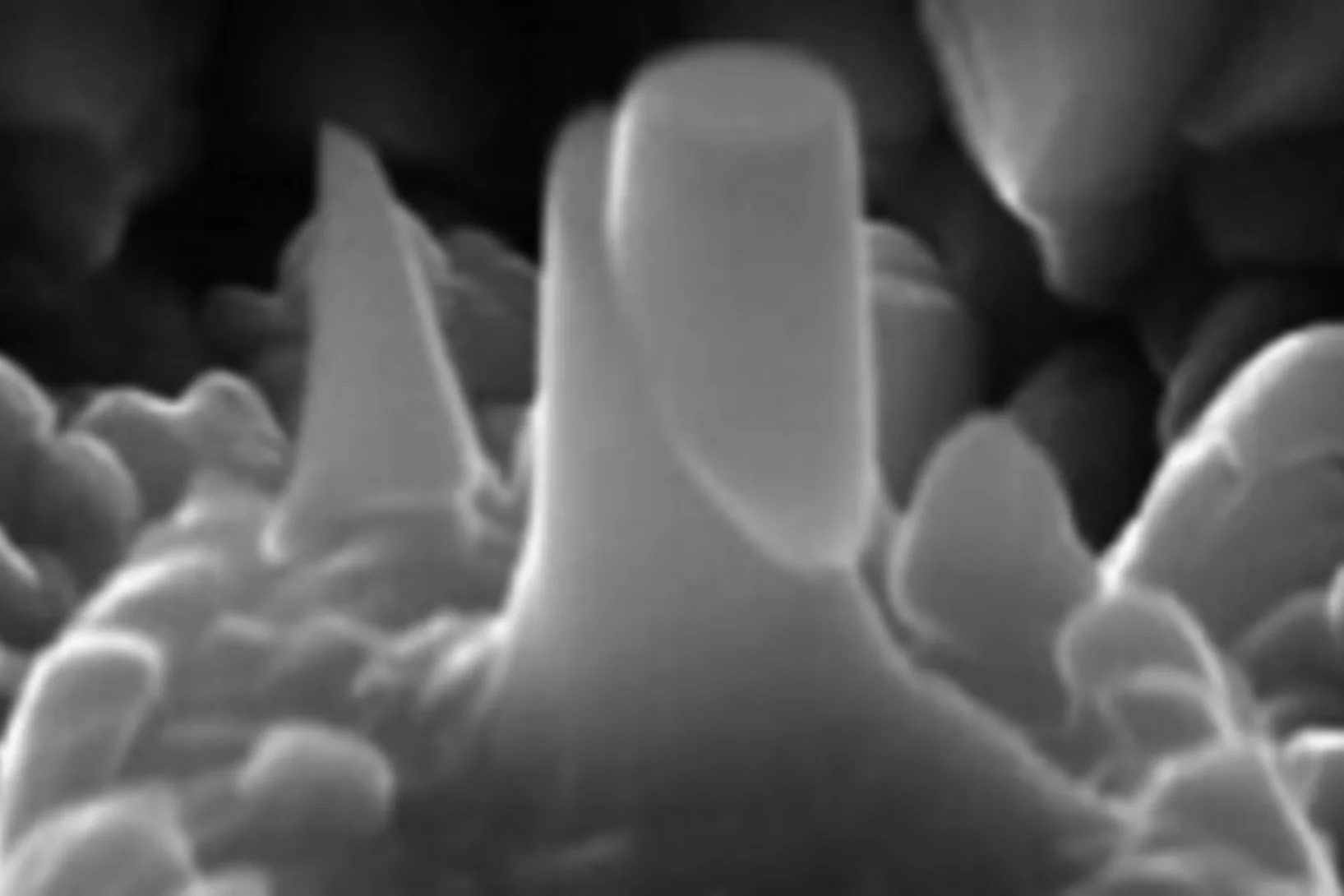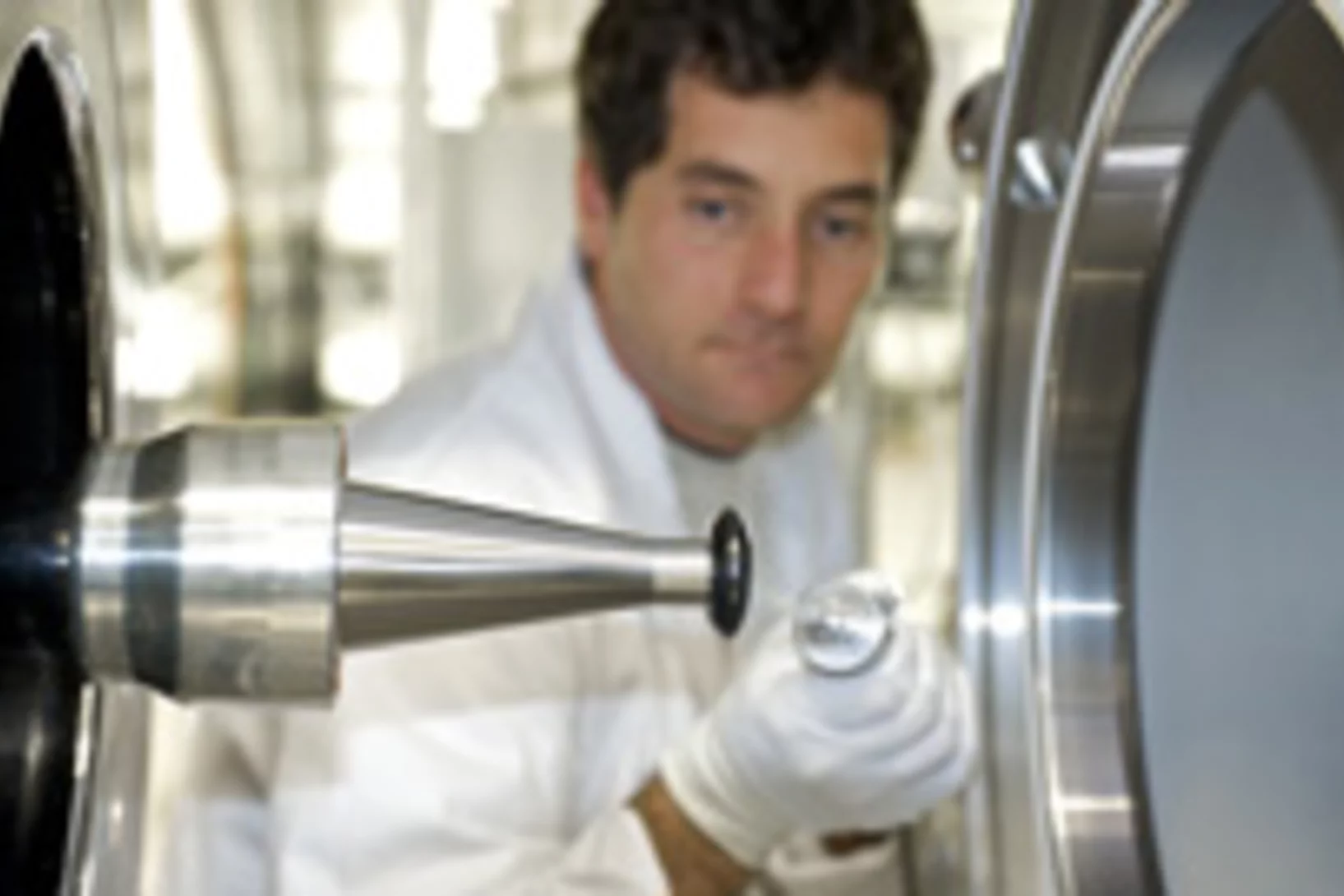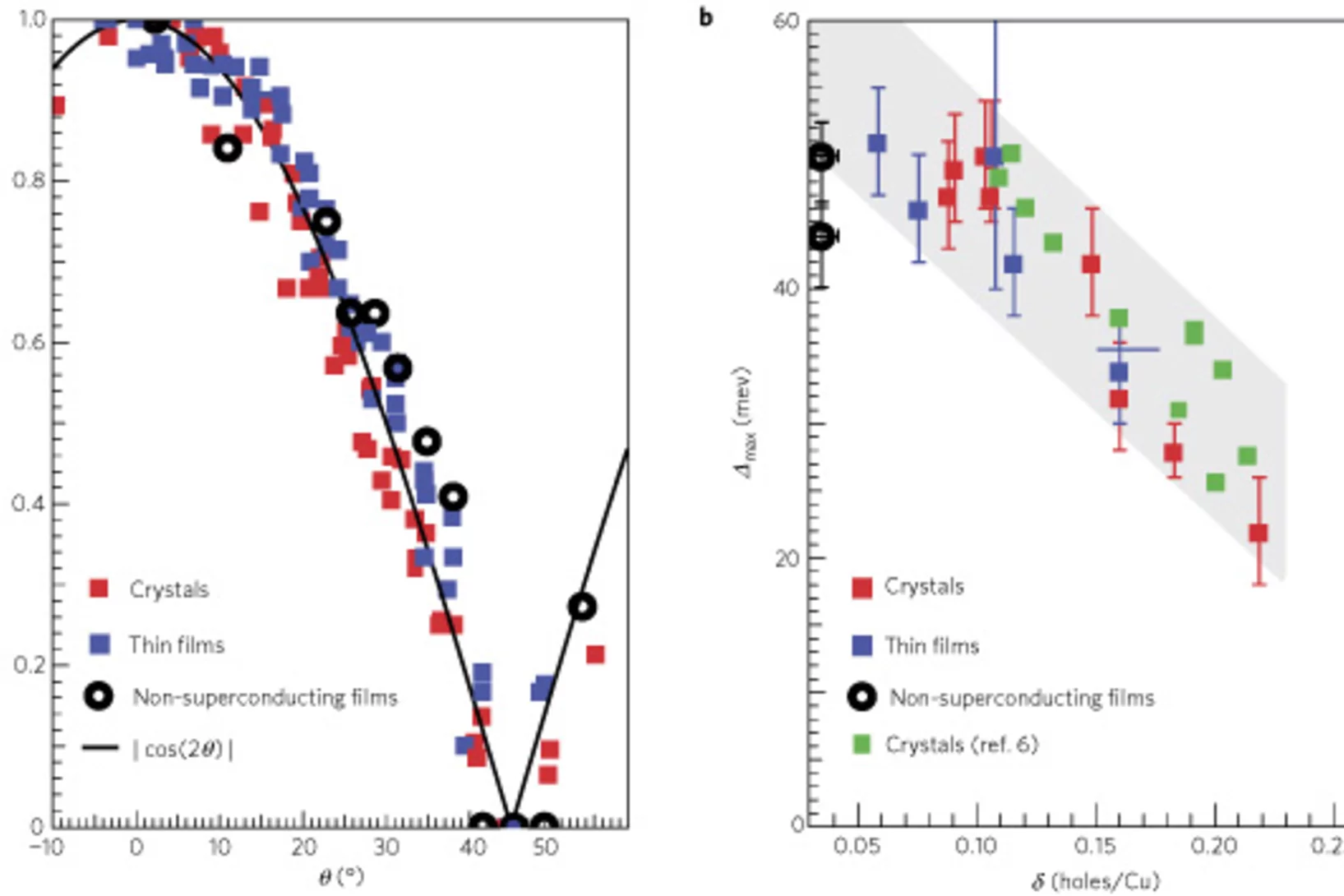Abandon de l’énergie nucléaire, développement de l’énergie solaire et éolienne, production d’énergie à partir de la biomasse, réduction de la consommation d’énergie. D’ici 2050, la Suisse doit atteindre la neutralité climatique. Un objectif ambitieux, rendu plus urgent que jamais par une situation géopolitique de plus en plus difficile. Comment faire pour mettre en place ces prochaines années un approvisionnement énergétique durable et résistant pour la Suisse? Comment les énergies renouvelables peuvent-elles être utilisées de manière optimale? Quelles sont les nouvelles technologies les plus prometteuses? Au PSI, des chercheurs s’efforcent de trouver des réponses à ces questions décisives.
Halbleiter aus Kunststoff besser verstehen
Halbleiter aus Polymermaterialien dürften in Zukunft immer mehr Bedeutung für die Elektronikindustrie bekommen à etwa als Grundlage von Transistoren, Solarzellen oder Leuchtdioden. Meist bestehen sie nicht aus einer einzelnen Substanz, weil sich ihre besonderen elektrischen Eigenschaften oft erst dann ergeben, wenn man mehrere verschiedene Polymere miteinander mischt. Forschende des Paul Scherrer Instituts und der Universität Cambridge ein Verfahren entwickelt, mit dem sie den detaillierten Aufbau des Materials sowohl im Inneren als auch an der Oberfläche bestimmen können.Cette actualité n'existe qu'en anglais et allemand.
Understanding plastic semiconductors better
New method allows important insights into polymer semiconductors
Semiconductors made from polymer materials are becoming increasingly important for the electronics industry – as a basis for transistors, solar cells or LEDs – showing important advantages when compared to conventional materials: they are lightweight, flexible and very cheap to produce.
Un nouveau procédé de radiographie permet de différencier ce qui, auparavant, avait la même apparence
Sur les images créées au moyen du procédé de contraste de phase, il est possible de distinguer des tissus (muscles, cartilages, tendons ou tumeurs des parties molles) qui présentent pratiquement le même aspect sur des radiographies classiques. Des chercheurs de l’Institut Paul Scherrer et de l’Académie Chinoise des Sciences ont perfectionné le procédé de manière à rendre son utilisation plus simple à l’avenir. Cette nouvelle méthode pourrait permettre d’identifier des tumeurs ou de visualiser des objets dangereux placés dans des bagages.
New X-ray technique distinguishes between that which previously looked the same
A new method forms the basis for the widespread use of an X-ray technique which distinguishing types of tissue that normally appear the same in conventional X-ray images
Le proton est plus petit que ce que l'on pensait
Le proton - un des composants fondamentaux de la matière - est plus petit que ce que l’on supposait jusqu’ici. C’est ce que viennent de montrer les expériences menées par une équipe de recherche internationale à l’Institut Paul Scherrer PSI, à Villigen, en Suisse.
Paul Scherrer Institut ermöglicht bessere Versorgung der Spitäler mit hochwirksamem Krebsmedikament
Das Paul Scherrer Institut ist für die Behandlung von bestimmten Krebserkrankungen mittels seiner einzigartigen Protonentherapie-Anlage bekannt. Nun hilft das PSI auch bei der Behandlung einer Gruppe von Krebspatienten durch die Herstellung eines Krebsmedikaments. Die erste Patientendosis wurde heute am Zentrum für Radiopharmazeutische Wissenschaften des PSI hergestellt und im Kantonsspital Luzern einem Patienten verabreicht.Cette actualité n'existe qu'en allemand.
Gesamtbundesrat zu Besuch am Paul Scherrer Institut
Der traditionelle Jahresausflug des Bundesrats hat dieses Jahr in die Heimat von Bundespräsidentin Doris Leuthard, in den Aargau, geführt. Mit ihren Ratskolleginnen und Ratskollegen sowie der Bundeskanzlerin und den beiden Vizekanzlern besuchte die Bundespräsidentin am Freitag, 2.Juli 2010 als erste Station das Paul Scherrer Institut, das grösste Forschungsinstitut der Schweiz.Cette actualité n'existe qu'en allemand.
Protonenpumpe sorgt für Energie aus Nahrung und Sauerstoff
Es ist ein zentraler Vorgang des Lebens: Nahrung verbindet sich mit Sauerstoff; dabei wird Energie frei und für unterschiedliche Prozesse im Organismus verfügbar. Mit Hilfe von Untersuchungen an der Synchrotron Lichtquelle Schweiz SLS am Paul Scherrer Institut konnten Forscher einen entscheidenden Teil dieses Vorgangs auf molekularer Ebene erklären.Cette actualité n'existe qu'en anglais et allemand.
La recherche énergétique suisse dans le réseau européen
L'Institut Paul Scherrer participe à l'Alliance européenne de la recherche énergétiqueDévelopper des moyens permettant d'assurer un approvisionnement durable en énergie est l'un des défis techniques les plus urgents d'aujourd'hui.
Lösungsansätze zum Schutz des globalen Klimas
Tagung am Paul Scherrer Institut bringt Energiefachleute zusammenAls grösstes Energieforschungszentrum der Schweiz und Sitz des Kompetenzzentrum Energie und Mobilität CCEM lud das Paul Scherrer Institut am 11. Juni zu einer Tagung über Lösungsansätze zum Schutz des globalen Klimas ein. Acht Vorträge von Energieexperten aus Forschung und Industrie zeigten die Vielfalt der Verfahren, die zu einer Reduzierung des CO2-Ausstosses führen könnten. In der anschliessenden Podiumsdiskussion wurde deutlich, was über technische Ansätze hinaus getan werden muss.Cette actualité n'existe qu'en allemand.
Nachhaltige Elektrizität: Wunschdenken oder bald Realität?
Der neue Energie-Spiegel ist da.Nachhaltigkeit ist heute in aller Munde. Kaum ein Begriff wird so oft gebraucht wie auch missbraucht. Der Wunsch nach einer nachhaltigen Entwicklung ist wohl unbestritten, aber was bedeutet das konkret im Energie- und Stromsektor?Cette actualité n'existe qu'en allemand.
The nature of nitrate at the ice surface
Trace contaminants such as strong acids have been suggested to affect the thickness of the quasi-liquid layer at the ice/air interface, which is at the heart of heterogeneous chemical reactions between snowpacks or cirrus clouds and the surrounding air. We used X-ray photoelectron spectroscopy (XPS) and electron yield near edge X-ray absorption fine structure (NEXAFS) spectroscopy at the Advanced Light Source (ALS) to probe the ice surface in the presence of HNO3 at 230 K.
Spitzenforschung für die Schweizer Industrie
Das Paul Scherrer Institut stellt vor, wie die Industrie von der Forschung des Instituts profitieren kann.Wie können sich Unternehmen durch die Zusammenarbeit mit dem Paul Scherrer Institut PSI einen Wettbewerbsvorteil verschaffen? war die zentrale Frage der heutigen Jahresmedienkonferenz des PSI. Für eine Industrie, die wirklich innovative Produkte anbieten will, ist das PSI als Zentrum der naturwissenschaftlich-technischen Spitzenforschung ein natürlicher Partner.Cette actualité n'existe qu'en allemand.
Rückkehr in die Berufstätigkeit am Paul Scherrer Institut
Erfolgreiches Pilotprojekt für Naturwissenschaftlerinnen und Ingenieurinnen geht nun in die Regelstruktur über.
Einschlägige Studien haben ergeben, dass spätestens nach der Promotion zahlreiche hochqualifizierte Wissenschaftlerinnen und Ingenieurinnen ihre Karriere (vorerst) nicht weiterverfolgen. Deshalb hat das Paul Scherrer Institut vor einem Jahr ein Pilotprojekt ins Leben gerufen.
Die Massnahme hat sich als Erfolg erwiesen und ist nun fester Bestandteil der PSI-Personalpolitik.
Cet article n'existe qu'en allemand.
Die Massenkonzentration der isländischen Vulkanasche im europäischen Luftraum
Daten des Paul Scherrer Instituts von der Messtation auf dem Jungfraujoch liefern wichtige Erkenntnisse.Die Eruption des isländischen Vulkans Eyjafjallajokull hat das Fliegen in grossen Teilen Europas zum Erliegen gebracht. Die Entscheide beruhten vor allem auf Modellrechnungen. Wie gefährlich ist nun diese Vulkanasche für Flugzeuge?Cette actualité n'existe qu'en anglais et allemand.
Forscher am Paul Scherrer Institut erhalten Titularprofessur an der Universität Basel
Das Argovia-Netzwerk des Kantons Aargau macht eine enge Verknüpfung von Aargauer Spitzenforschung und Basler Hochschullehre möglichHeute fanden am Paul Scherrer Institut PSI in die Antrittsvorlesungen der neuen Basler Titularprofessoren Thomas Jung und Frithjof Nolting, statt. Jung und Nolting leiten bereits seit mehreren Jahren eigene Forschungsgruppen am PSI.Cette actualité n'existe qu'en allemand.
Des collisions avec une énergie inégalée enregistrées grâce à la technologie de l'Institut Paul Scherrer
C'est au CERN que les premières collisions de particules à une énergie la plus haute jamais générée par l'homme ont été mesurées. Elles ont été enregistrées au CERN dans le cadre de l'expérience CMS, à laquelle le PSI a contribué en fournissant l'un des composants essentiels, à savoir le détecteur central à pixels. Après un laps de temps inhabituellement court, l'analyse de ces données a rapidement donné lieu aux premières publications scientifiques – le fruit du travail de 3 000 chercheurs et ingénieurs issus de quelque 40 pays qui ont collaboré à cette gigantesque expérience.
Les mémoires magnétiques de dernière génération sont 100 000 fois plus rapides que les disques durs classiques
Les disques durs des ordinateurs pourraient bientôt être d'histoire ancienne : Les chercheurs de l'Institut Paul Scherrer (PSI) et de l'Université de Constance en Allemagne, ont étudié des bandes magnétiques d'un nouveau genre. Ils ont démontré que la densité de stockage de ces bandes magnétiques ainsi que leur temps d'accès étaient plus élevées et rapides que les supports de mémoire classiques. Le 1er avril 2010, Mathias Kläui, responsable de cette étude, sera nommé Professeur et sera financé par l'EPF Lausanne et le PSI.
The competition between organics and bromide at the aqueous solution – air interface as seen from ozone uptake kinetics and X-ray photoelectron spectroscopy
A more detailed understanding of the heterogeneous chemistry of halogenated species in the marine boundary layer is required. Here, we studied the reaction of ozone (O3) with NaBr solutions in presence and absence of citric acid (C6H8O7) under ambient conditions. Citric acid is used as a proxy for oxidized organic material present at the ocean surface or in sea spray aerosol.
Des nouvelles de la chambre à smog: les mécanismes de formation de particules dans l'atmosphère enfin décodés
Jusqu'à présent, la nucléation ou formation de particules dans l'atmosphère restait une énigme. Jusqu'à très récemment, les chercheurs pensaient que l'acide sulfurique était le facteur principal dans la formation des particules. Cependant, les analyses effectuées sur le terrain et en laboratoire ont toujours fourni des résultats contradictoires: on observait que les concentrations en acide sulfurique nécessaires à l'occurrence de la nucléation étaient nettement plus élevées en laboratoire que sur le terrain. Grâce à une expérience menée dans la chambre à smog, les chercheurs de l'Institut Paul Scherrer (PSI) ont trouvé l'origine de ces résultats contradictoires. Leur découverte constitue ainsi une avancée décisive dans la recherche sur le climat.
Atteindre le nerf vital de la tumeur
Pour se développer, une tumeur cancéreuse doit être irriguée par des vaisseaux sanguins et lymphatiques qui l'approvisionnent en oxygène et en substances nutritives. Ces mêmes vaisseaux assurent également l'élimination des déchets qui se forment dans la cellule. Pour garantir leur approvisionnement, les tumeurs émettent des transmetteurs qui incitent les vaisseaux environnants à se ramifier et à se développer à l'intérieur de la tumeur.
Das PSI füllt ein Vakuum mit einem Vakuum
Einweihung Vakuumlabor im Schülerlabor iLab am Paul Scherrer InstitutIm Beisein der Erziehungsdirektoren der Nordwestschweiz hat das Paul Scherrer Institut heute ein zweites Experimentierthema in seinem Schülerlabor iLab eingeweiht. Das neue Vakuumlabor bietet den Schülerinnen und Schülern weitere spannende Versuche und ergänzt das im April 2008 eröffnete Schalllabor in idealer Weise.Cette actualité n'existe qu'en allemand.
Local current measurement in PEFC
Major barriers for a successful commercialization of Polymer Electrolyte Fuel Cells (PEFCs) are insufficient lifetime and high cost of platinum catalyst. A comprehensive understanding of aging and transport phenomena on all relevant length scales is a key to improve durability and to reduce precious metal loading. Flow fields as used in PEFCs for the distribution of the reactant gases over the electrode area cause inhomogeneities. The importance of down the channel inhomogeneities has been realized.
Une énigme résolue: l'origine de la formation de poussières fines dans l'air
Des chercheurs de l'Institut Paul Scherrer, de l'Université du Colorado et de 29 autres instituts de recherche de différents pays ont étudié la composition des constituants organiques des poussières fines dans différentes régions du monde et ont déterminé à chaque fois les substances à l'origine de leur formation. Ils ont ainsi pu élucider, pour la première fois, le rôle joué par certains composants des gaz d'échappement dans la formation des poussières fines.
High-Tech umgeben von Natur pur
Am Paul Scherrer Institut ist alles im grünen Bereich70 Prozent des Firmenareals des Paul Scherrer Instituts PSI in Villigen sind natur-nah gestaltet. Für diese Bemühungen wurde das Forschungszentrum bereits zum dritten Mal mit dem Qualitätslabel der Stiftung Natur&Wirtschaft ausgezeichnet.Cette actualité n'existe qu'en allemand.
Service offert aux utilisateurs – un service pour la communauté scientifique
Les neutrons, la lumière synchrotron et les muons sont extrêmement utiles pour des chercheurs dans de nombreuses disciplines scientifiques. Grâce à ces sondes il est possible de déterminer la structure de cristaux, de comprendre des processus magnétiques ou d'élucider les structures de matériaux biologiques. Cependant, les difficultés liées à la production de ces sondes sont tels que la plupart des groupes de chercheurs ne peuvent pas accéder à des sources de neutrons, de muons ou de lumière synchrotron au sein de leur propre institut.
Du gaz naturel synthétique produit à partir du bois
Les chercheurs du PSI travaillent sur des procédés de transformation de restes de bois en gaz naturel synthétique pouvant alimenter le réseau de gaz. La Suisse dispose de suffisamment de bois pour pouvoir couvrir quelques pour cents du besoin énergétique. La production énergétique à partir du bois ne produit pas d'excédent de CO2, car le CO2 généré par la combustion aurait tout de même été produit lors de la décomposition naturelle du bois. Contrairement à la combustion directe du bois, l'utilisation de gaz naturel synthétique ne produit pas de poussières fines nuisibles à la santé.
Des matériaux fiables pour les réacteurs nucléaires
Les matériaux employés dans les centrales nucléaires sont soumis à des exigences élevées. Les standards de sécurité en matière de sélection, d'utilisation et de surveillance des matériaux sont donc très élevés. Le PSI analyse le comportement et le vieillissement d’éléments utilisés dans ces installations. Ainsi, les chercheurs étudient l'importance des phénomènes de corrosion de fissure sous contrainte ou les effets de l’irradiation par des particules énergétiques sur la durabilité des matériaux.
Schweizer Spitzenforschung in Europäischer Grossforschungsanlage
Heute haben die Vertreter von zehn Staaten im Hamburger Rathaus an der Vertragsunterzeichnung für den Bau des European XFEL teilgenommen. Die Schweiz ist am Aufbau der Anlage beteiligt und wird zum Gelingen des Projekts an entscheidenden Stellen mit Know-how beitragen, das am Paul Scherrer Institut entwickelt worden ist.Cette actualité n'existe qu'en allemand.
Observation of a d-wave nodal liquid in highly underdoped Bi2Sr2CaCu2O8+δ
A key question in condensed-matter physics is to understand how high-temperature superconductivity emerges on adding mobile charged carriers to an antiferromagnetic Mott insulator. We address this question using angle-resolved photoemission spectroscopy to probe the electronic excitations of the non-superconducting state that exists between the Mott insulator and the d-wave superconductor in Bi2Sr2CaCu2O8+δ.

